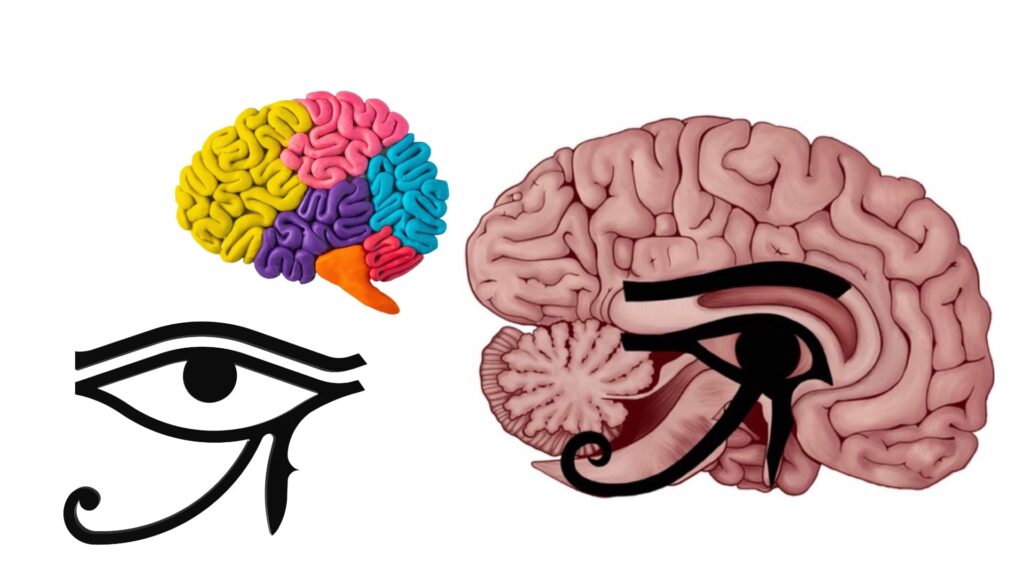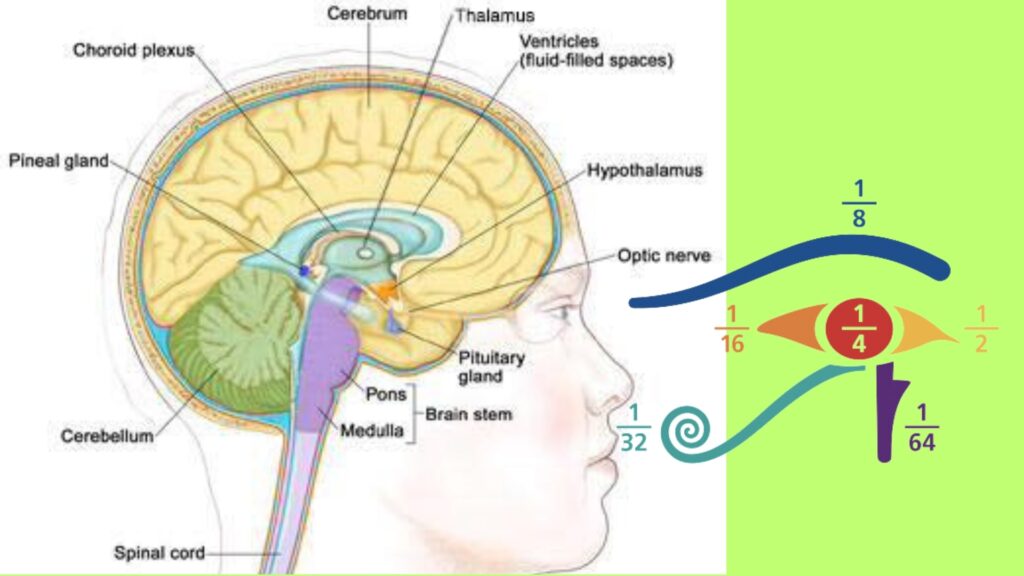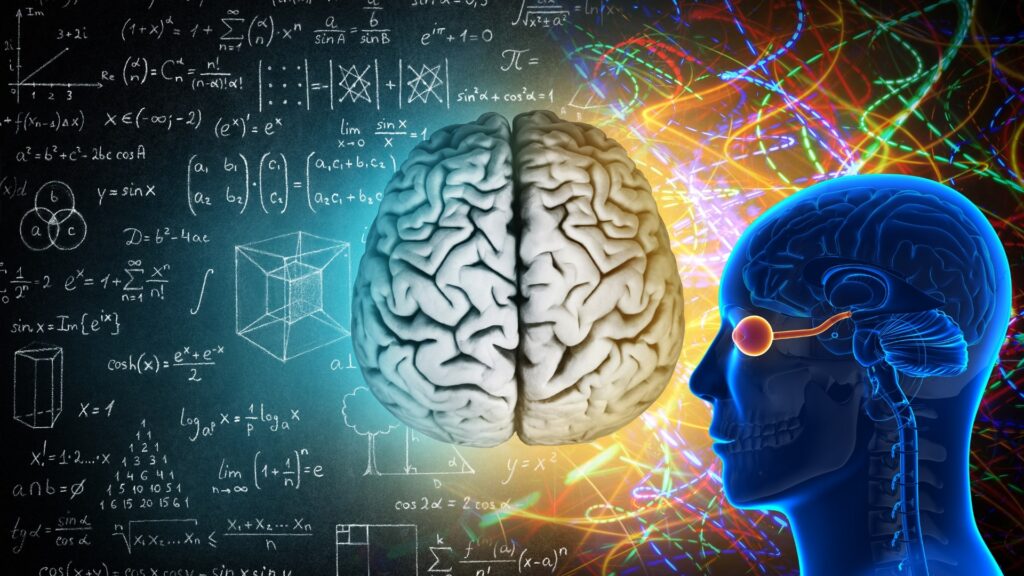Brief History
It seems like you might be referring to the “Eye of Horus,” an ancient Egyptian symbol associated with protection, royal power, and good health. It’s constantly depicted as an eye with distinctive markings and was believed to bring blessings and guard against evil. Let’s dive deeply in ancient myths and exploring the eye of Horus in Brain.
Scientific Perspectives
Microcosmic Route
The activation and civilization of the Third Eye are central practices in Taoist contemplation and energy work. The idea of the” microcosmic route,” a contemplative fashion that includes moving energy throughout the body, is also connected to the Third Eye.
Taoist practitioners seek to awaken their spiritual vision and gain an understanding of the nature of reality by concentrating on the Third Eye and moving energy throughout the body.
Third Eye Contemplation
In Taoism, the development of inner vitality, spiritual understanding, and dubitation Practitioners work to open and expand their Third Eye through contemplation and energy work, which enables them to see beyond the physical realm and develop a lower awareness of the spiritual base of actuality.
Connection between the third eye and the eye of Horus The Eye of Horus and the Third Eye are not the same thing, although they are sometimes associated with similar spiritual and metaphysical generalities.
The Eye of Horus is an ancient Egyptian symbol that represents protection, power, and good health and was constantly used in religious rituals and art.
The Eye of Horus and the Third Eye
It’s depicted as a stylized eye, with various rudiments representing different corridors of the eye and its functions. On the other hand, the Third Eye is a spiritual generality that is constantly associated with the pineal gland in modern Western churches and New Age beliefs.
It’s believed to be a tropical” eye” that provides spiritual vision and insight, allowing individuals to see beyond the physical world and into the realm of the spiritual. While the Third Eye is not a physical structure in the body, some believe that the pineal gland may play a part in spiritual exploits and knowledge.
So, in summary, the Eye of Horus and the Third Eye are not the same thing, but both are associated with spiritual and metaphysical generalities in different cultural contexts.
Medical History of the Eye Hour
Since Galen, a Greek croaker and champion, first recorded information on the pineal gland’s significance, it has been the focus of expansive exploration. Associates of Galen held the opinion that the pineal controlled the movement of” psychic pneuma,” an ethereal substance known as” the first instrument of the soul.

Galen still dissented, contending that the pineal was only a gland that controlled blood inflow. René Descartes’ study of the pineal led to a revitalization of the supernatural traits connected with it. He claimed that it was” the abecedarian seat of the soul” and that it was where all study began.
The reflex proposition, or the involuntary system of acts carried out in the body’s function, is substantially credited to Descartes. In his opinion, the intellect might live independently of the body and retain the capacity to subdue beast instincts by entering the brain through the pineal gland. Because the pineal doesn’t have a matching brace like most other sensitive organs, Descartes allowed.
The Brain: The Epicenter of Human Consciousness
Eye of Horus and its significance to drugs and neuroanatomy The Eye of Horus has been used for numerous conceits over the years, i.e., “Eye of the Mind, Third Eye, Eye of the Truth or Insight, the Eye of God Inside the Mortal Mind.
Herein, we will illustrate the Eye of Horus’ anatomical applicability by observing the series of artwork created by our illustrator (GCQ). Then, we’re trying to punctuate one of the most baffling secrets of ancient mortal history: the Eye of Horus.
Eye of Horus fractions
The Eye of Horus fractions were organized together to form the whole eye, analogous to the myth, and these fractions were given a series of numerical values with a numerator of one and dominators to the powers of two. 1/2,1/4,1/8,1/16,1/32, and1/64.
The Eye of Horus with its six corridors (1/2,1/4,1/8,1/16,1/32, and1/64) The fragments were used to represent the Heqat fragments, the measuring unit that was employed by the ancient Egyptians for grains and flour, all with powers of two in their denominators and one in their numerator.
Each of these fragments corresponds to a different mortal sense. The 1/2 accounts for the sense of smell, the 1/4 represents sight, the 1/8 represents allowed, the 1/16 represents hail, the 1/32 represents taste, and the 1/64 represents touch.

Ancient Wisdom and Modern Science Merge
What’s a pineal gland?
The pineal gland is a bity endocrine gland set up in most invertebrates brains. A small gland with the appearance of a pinecone is located deep in the center of the brain. Despite its small size, it plays a significant role in regulating our sleep-wake cycle and overall health. Since this gland is located in the most profitable position for this function, in the midst of all the cavities, it’s now hard to find any other similar position in the entire head.
Deconstruction of the pineal gland Structure and position
The pineal gland, a part of the endocrine system, is located in the brain’s epithalamus region. It’s about the size of a pea and resembles a pinecone. The gland is made up of pinealocytes, occasionally referred to as pineal cells, which are in charge of producing and concealing melatonin.
Connection to the brain and nervous system
The pineal gland is linked to the brain by the suprachiasmatic nexus( SCN), which is located in the hypothalamus. The pineal gland produces and secretes melatonin as a result of information about the cycles of light and dark that the SCN receives from the eyes.
Functions of the Pineal Gland
- Aging
- Melatonin production
- Immunological functions
- Regulating Circadian Measures and Sleep-Wake Cycles
Connection between Pineal Gland and the Eye of Horus
Some philosophical traditions have connected the pineal gland to the” third eye”. This is due to the pineal gland’s proximity to the visual cortex and its part in controlling our circadian measures, which are linked to light and darkness and regulate our sleep-wake cycle.
According to some, cranking the pineal gland can lead to an enhanced state of knowledge and spiritual mindfulness. The pineal gland is allowed to play a part in psychic and spiritual growth as well.
While some scientific substantiation suggests that the pineal gland may contribute to these ideas, further inquiry is needed to completely comprehend how they relate to other spiritual ideas.

Different Religions and Eye of Horus
Ancient Egypt and Eye of the Horus
The Eye of Horus was constantly depicted as a stylized eye, with various rudiments representing different corridors of the eye and its functions. Anatomically, each part corresponds with the center of a particular mortal sensorium.
For multitudinous times, the Eye of Horus was considered a symbol of substance and protection by the ancient Egyptians, and its heritage continued into modern Egypt as well.
Hinduism and the Eye of the Horus
Shiva and other Hindu deities are constantly depicted with a literal third eye on their foreheads. This eye represents an awakening, or enlightenment, as the capability to see into advanced realms of actuality and knowledge. Multitudinous people interpret this third eye as the pineal gland. Hinduism considers snakes to be lucky, and Kundalini Yoga imagery constantly features them. The body’s chakras are constantly depicted in Kundalini by a winged staff encircled by two snakes, or a caduceus, as it’s known in Greek tradition.
Buddhism and the Eye of Horus
Buddhists constantly refer to the Third Eye as the” Eye of Wisdom” or the” Divine Eye. It’s allowed to have a tropical eye that offers perception and appreciation beyond what is visible to the naked eye.
It’s regarded as a representation of spiritual knowledge and the capacity for clear-eyed, perceptive observation of the outside world. The idea of emptiness, which holds that everything is connected and dependent upon everything new and that there is no stable or independent tone, is constantly associated with the Third Eye in Buddhist training.
The Third Eye is viewed as a tool for realizing the substance of reality as it truly is and seeing through the attachments and fancies that keep us bound to misery. Practices analogous to contemplation and mindfulness are seen as a way to awaken and develop the Third Eye, allowing individuals to cultivate wisdom and compassion and to see the world with greater clarity and insight.
Taoism and the Eye of Horus
In Taoism, the Third Eye is constantly associated with the generality of internal energy, or” qi. It’s believed to be located in the” upper Dantian.
Conclusion
The Eye of Horus was constantly depicted as a stylized eye, with various rudiments representing different corridors of the eye and its functions. Anatomically, each part corresponds with the center of a particular mortal sensorium.
For multitudinous times, the Eye of Horus was considered a symbol of substance and protection by the ancient Egyptians, and its heritage continued into modern Egypt as well.
The generality of the Third Eye is set up in various myths and spiritual traditions around the world, including Hinduism, Buddhism, and Taoism.
Related FAQ’s
1. Is there scientific evidence supporting the connection between the Eye of Horus and the pineal gland?
The “Eye of Horus in Brain” is a philosophical and symbolic idea, based on ancient symbolism and mythology, rather than scientifically proven.
2. How can I activate my third eye or pineal gland?
Practices like meditation, yoga, and mindfulness can help stimulate the pineal gland and promote a sense of inner awakening.
3. Are there any health benefits associated with pineal gland activation?
Some people report enhanced intuition, clarity of thought, and spiritual experiences, but these effects can vary from person to person.
4. How does the Eye of Horus relate to the brain?
The Eye of Horus and the brain are symbolic and metaphorical, suggesting the human brain may possess hidden knowledge or wisdom similar to the protective qualities of the Eye of Horus.
5. Are there any ongoing studies or research related to this concept?
As of September 2021, there are no specific studies or research projects related to the “Eye of Horus in Brain” concept, primarily a topic of personal exploration and interest.
Keep Reading: How To Earn Money on Fiverr :: 10 Benefits of Hiring a Dental Marketing Agency
4 Best Natural Home Remedies For Hair/Beard Loss and Thinning











